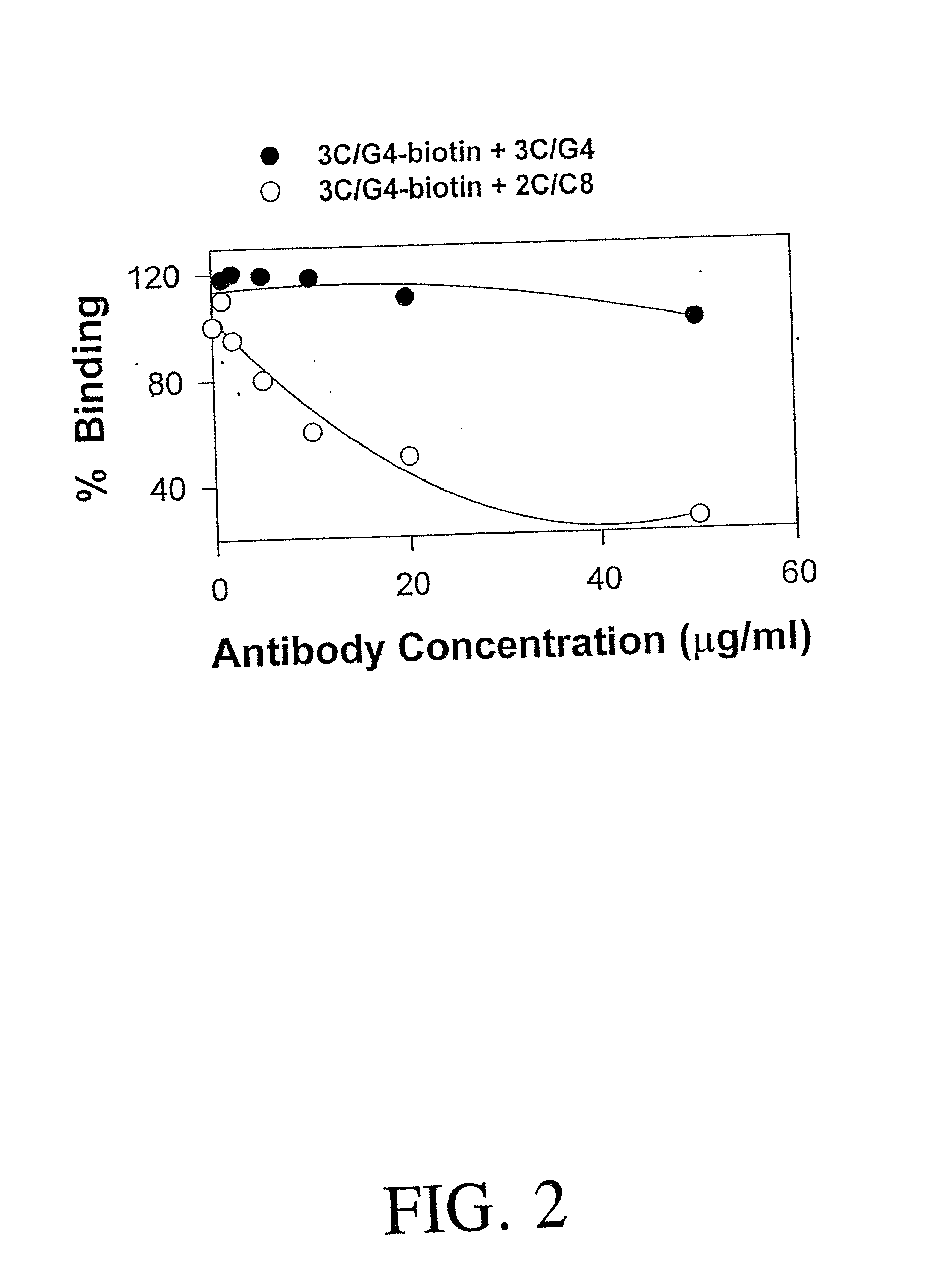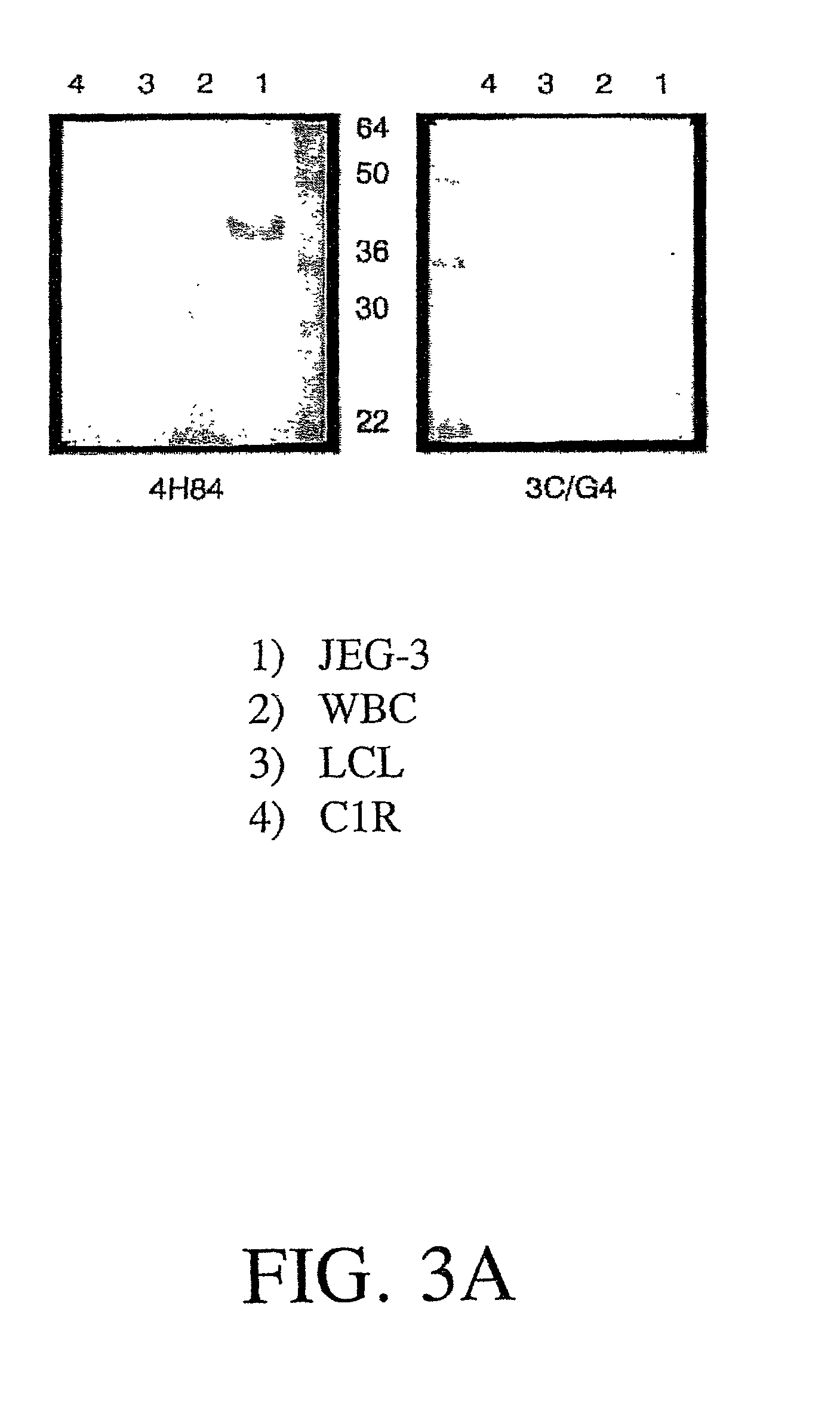Detection of HLA-G
a technology of placenta and hla, which is applied in the field of detection of hla, can solve the problems of not being able to quickly detect in a clinical setting, unable to accurately predict currently no good predictive test for the development of pre-eclampsia, etc., and achieves accurate measurement, increased likelihood of causing pregnancy, and limited detection time
- Summary
- Abstract
- Description
- Claims
- Application Information
AI Technical Summary
Benefits of technology
Problems solved by technology
Method used
Image
Examples
example 2
Serum and Placental HLA-G is Decreased in Women with Pre-eclampsia
[0126] HLA-G levels in serum and placenta tissues from women with pre-eclampsia at term were compared with levels in normal pregnant women. HLA-G levels were determined by using an ELISA according to the invention in 20 subjects with pre-eclampsia and 14 control pregnant women. Both serum and placental HLA-G levels were significantly decreased in the pre-eclampsia group (median 0.026 .mu.g / ml in serum and median 0.026 .mu.g / mg protein in placenta), in comparison with normal pregnant women (median 0.093 .mu.g / ml in serum and median 0.088 .mu.g / mg protein in placenta, p=0.0112 and p=0.0406, respectively). There was a significant correlation between serum and placental HLA-G levels (r=0.603, p=0.002). The impaired expression of HLA-G suggested that there was an alternation of the maternal-fetal immune relationship in pre-eclampsia and decreased HLA-G plays a role in etiology of the disorder.
[0127] Pre-eclampsia is a dise...
example 3
Differences in Serum Human Leukocyte Antigen-G (HLA-G) in Normal and Pre-eclamptic Women at During Different Trimesters of Pregnancy
[0155] Serum samples were collected from normal pregnant women or from pre-eclamptic women at first trimester, second trimester and third trimester (N=12). An ELISA assay according to the invention was conducted, using 96-well plates prepared with immobilized 3C / G4 antibody, in which samples were incubated. HRP-labeled 2C / C8 binding was detected with OPD.
[0156] FIG. 13 illustrates the data points and median values for HLA-G levels in serum taken from women in the first trimester of their pregnancy either during a normal pregnancy, shown in closed circles (.circle-solid.), or during pre-eclampsia, shown by open circles (.smallcircle.).
[0157] FIG. 14 illustrates the data points and median values for HLA-G levels in serum taken from women in the second trimester of their pregnancy either during a normal pregnancy, shown in closed circles (.circle-solid.), ...
example 4
Progesterone Increases HLA-G Expression In Vitro
[0160] HLA-G is expressed on placental tissues at the maternal-fetal interface. This restricted pattern of expression suggests that HLA-G may play a crucial role in maternal immune tolerance to the fetus. It has been reported that HLA-G expression is developmentally regulated and changes with stage of gestation. There are conflicting reports that the cytokine gamma IFN has an effect on HLA-G expression in vitro. Since, some studies suggest that progesterone is important in suppressing the maternal immunological response to the fetus, it was hypothesized that this steroid hormone may play a role in regulating HLA-G expression. The present study was performed to explore potential effects of progesterone on HLA-G expression in cytotrophoblasts and in the JEG-3 choriocarcinoma cell line in vitro.
[0161] Methods.
[0162] Purified cytotrophoblasts were prepared from first trimester placental tissue by standard techniques. JEG-3 choriocarcinoma ...
PUM
| Property | Measurement | Unit |
|---|---|---|
| Fraction | aaaaa | aaaaa |
| Fraction | aaaaa | aaaaa |
| Fraction | aaaaa | aaaaa |
Abstract
Description
Claims
Application Information
 Login to View More
Login to View More - R&D
- Intellectual Property
- Life Sciences
- Materials
- Tech Scout
- Unparalleled Data Quality
- Higher Quality Content
- 60% Fewer Hallucinations
Browse by: Latest US Patents, China's latest patents, Technical Efficacy Thesaurus, Application Domain, Technology Topic, Popular Technical Reports.
© 2025 PatSnap. All rights reserved.Legal|Privacy policy|Modern Slavery Act Transparency Statement|Sitemap|About US| Contact US: help@patsnap.com



